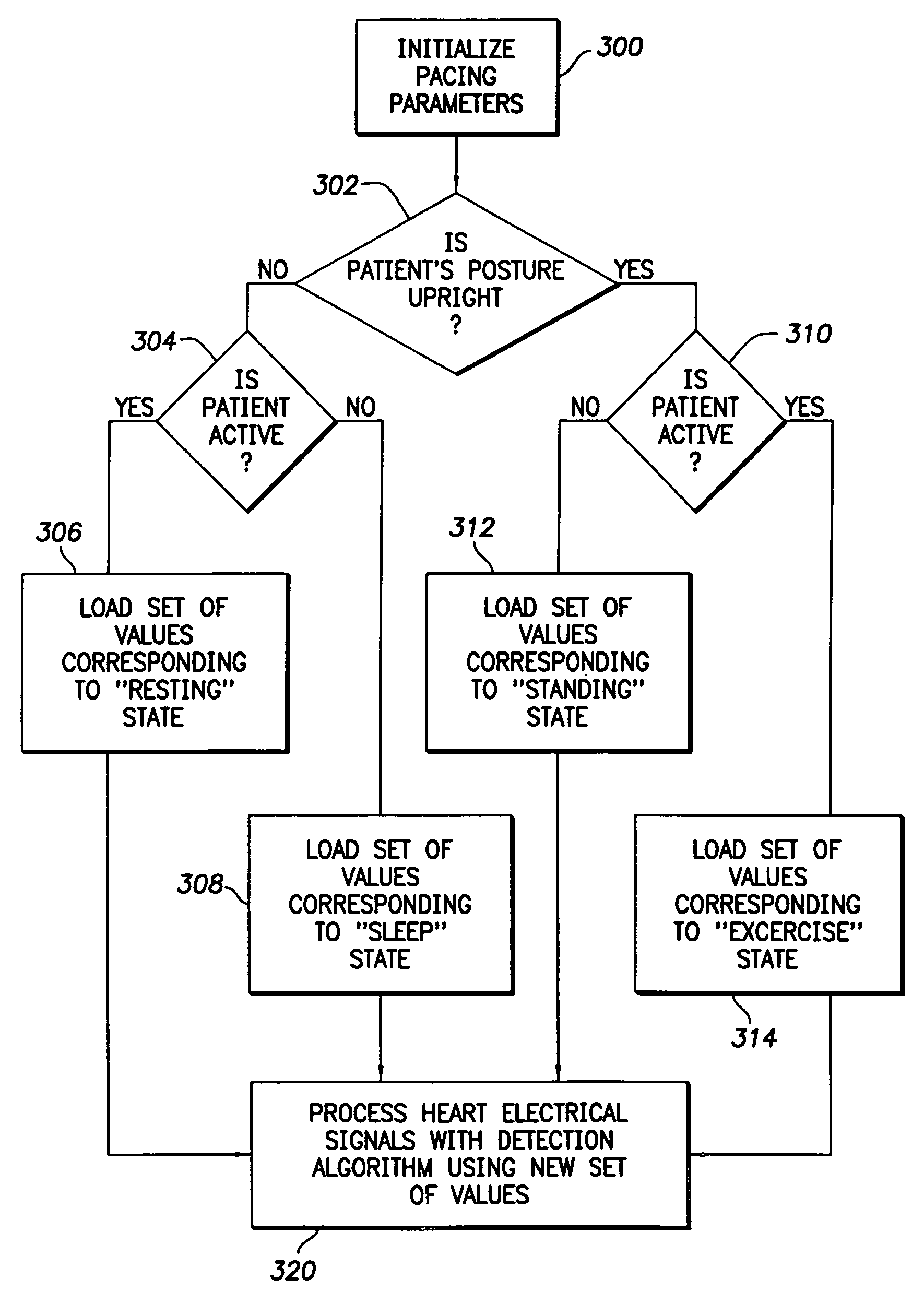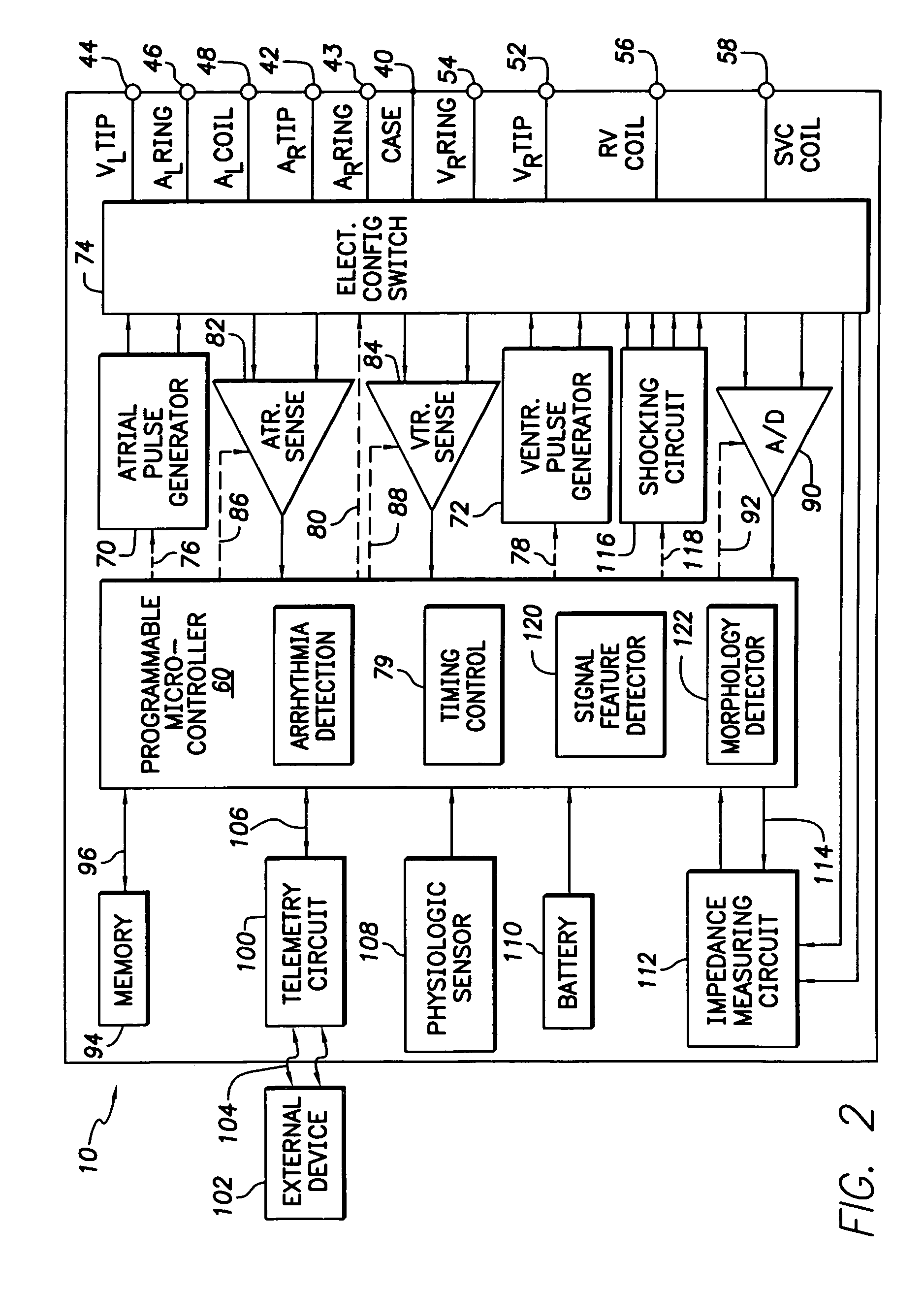Modification of evoked response detection algorithm based on orientation and activity of patient
a technology of evoked response and detection algorithm, which is applied in the field of implantable cardiac stimulation devices, can solve the problems of wasting significant amounts of energy during the life span of the pacemaker, the amount of electrical stimulation provided by the pacemaker cannot be permanently set by the manufacturer, and the pacemaker has a limited life span, so as to prevent an inaccurate prevent an erroneous loss of capture detection, and increase the output energy of the implantable cardiac stimulation devi
- Summary
- Abstract
- Description
- Claims
- Application Information
AI Technical Summary
Benefits of technology
Problems solved by technology
Method used
Image
Examples
Embodiment Construction
[0028]FIG. 1 is a diagram illustrating an implantable stimulation device in electrical communication with three leads implanted into a patient's heart for delivering multi-chamber stimulation and shock therapy according to one embodiment of the invention. The present invention may be used with as few as one lead and may be used for pacing in any chamber of the heart. The number of leads used, and the location(s) of attachment to the heart, will depend on the particular patient's condition as is well known in the relevant art(s). For example, in one dual-chamber pacing embodiment, the implantable stimulation device includes two leads that are adapted to be positioned within the right atrium and the right ventricle of the heart, respectively, so as to enable delivery of pacing pulses and sensing of heart activity in both the right atrium and right ventricle. The present invention is suitable for use with various implantable stimulation devices, including pacemakers and combined pacema...
PUM
 Login to View More
Login to View More Abstract
Description
Claims
Application Information
 Login to View More
Login to View More - R&D
- Intellectual Property
- Life Sciences
- Materials
- Tech Scout
- Unparalleled Data Quality
- Higher Quality Content
- 60% Fewer Hallucinations
Browse by: Latest US Patents, China's latest patents, Technical Efficacy Thesaurus, Application Domain, Technology Topic, Popular Technical Reports.
© 2025 PatSnap. All rights reserved.Legal|Privacy policy|Modern Slavery Act Transparency Statement|Sitemap|About US| Contact US: help@patsnap.com



